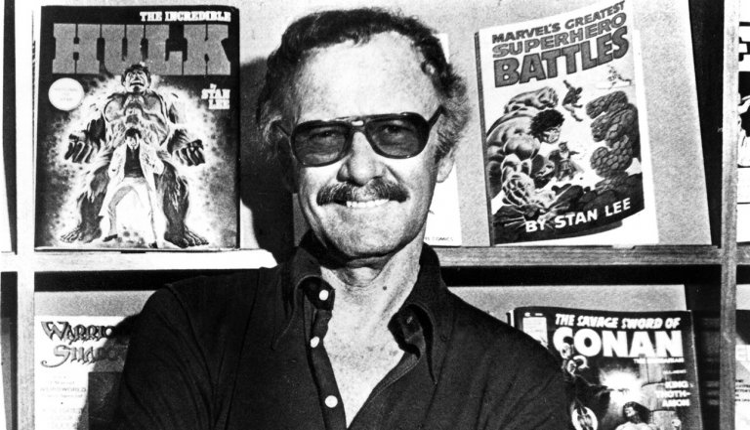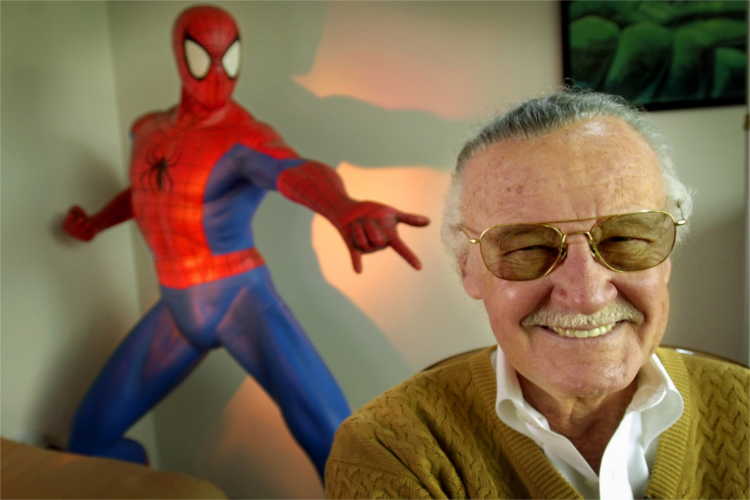Obituary | The Legacy of Comic Book Pioneer Stan Lee
There should be no greater example of the pervasiveness of Stan Lee’s impact on popular culture than the fact that my own father knew to text me informing me of his passing. While comic books and superheroes have a far bigger following than they’ve ever had before, it’s still fair to say that not many casual fans could name more than a few comic book creators. Certainly not my Dad. But he knows Stan Lee.
Unlike 99 per cent of people working in the comics industry, Stan ‘The Man’ Lee was so gifted at self-promotion that his popularity as a mascot of the Marvel empire often transcended the popularity of the characters he created (I’m pretty sure my Dad wouldn’t be able to tell you who Tony Stark is, bless him). While his legacy is mired in dubious claims by his peers over who did what and who created whom, there is still no denying that he set the stage for everything the industry would become. While people may claim that he hogged the limelight, they forget that without Stan Lee there wouldn’t be a fucking stage.
Hired in 1939 to Timely Publications as a glorified intern, Stanley Lieber worked his way up to the position of writer, penning prose stories based on the characters created in the wake of rival DC Comic’s Superman, notably Captain America. So embarassed was Lieber by the prospect of writing for comic books (at the time a throwaway medium aimed at young children) that he signed his name as ‘Stan Lee’. Throughout the 40s and 50s, Lee made a name for himself churning out various standalone stories in a variety of genres. As the years went by, he quickly tired of the laboriousness and repetition of the industry and contemplated quitting. His beloved wife Joan insisted that he instead try and write something he really cared about. So Lee created ‘The Fantastic Four’ alongside artist Jack Kirby about a dysfunctional family of superheroes, wherein the stories would be driven as much by the characters themselves as the plots. Or so he claimed.

As the fledgling Timely increased its output with its limited resources, a faster production method was devised that would enable writers and artists to complete issues more quickly – the writer and artist would come up with a rough plot for the issue, the artist would then essentially plot and draw the issue, leaving the ‘writer’ to fill in the dialogue and descriptive passages later on. Herein is where the trouble starts – with no clear paper trail of who did what and with Stan crediting himself simply as the ‘writer’, legendary artists like Jack Kirby (Fantastic Four, X-Men, The Avengers, the Incredible Hulk) and Steve Ditko (Spider-Man, Doctor Strange) quickly grew disillusioned with his self-celebration. Even in death, Lee has been credited as the ‘creator’ of so many famous characters (Hugh Jackman even praised him as the creator of Wolverine…a character that came along long after Lee had ceased work of any kind on X-Men) and while there are certain schools of thought that would agree with this descriptor quite strongly, it undoubtedly does a disservice to many of the geniuses that did so much of the heavy lifting.
But to paint Lee as this sort of moustache-twirling conman is to miss the point of his contribution. While it can certainly be framed in a negative way, Lee’s work on the Marvel Age of Comics was nonetheless tireless. While he was credited as a writer, he was also essentially the editor-in-chief, regularly reworking stories, demanding changes from artists to enhance the stories and making sure the best people were assigned to the best characters. And while the idea of plugging in dialogue may not seem like ‘writing’ to many people who’ve read Superman or Batman comics from the early years, it can’t be overestimated how incredible Stan’s words were for the time.
Unlike the staid, plainness of rival DC Comics, Stan created a jovial atmosphere in the pages of Marvel, he treated the reader like a close friend and would literally invite them into the world of the story (which he would describe with such embellishments as ‘the greatest story of all time – even better than last month which at the time of print was also the greatest story of all time!’).
Much has been made of the magic of Lee and Ditko’s run on The Amazing Spider-Man and it really can’t be overstated. While Batman and Superman evolved immeasurably from the time they were created to the time they hit the big screen, most of what people know about Spider-Man is right there in that collection of 38 issues.
Ditko and Lee pioneered the idea of a superhero having complex, human problems with which the readers, (crucially teenagers or ‘teen-agers’ as Stan referred to them) would actually relate. Peter Parker would frequently worry about his Aunt May having a panic attack about paying the rent in an era where Clark Kent’s greatest anxiety was that red kryptonite might turn him into a giant cockroach. In an era where Superman might meet a magical sea monster, fight him and fly away in the space of a few panels, Steve Ditko plotted a story (the incomparably brilliant Amazing Spider-Man #33) where Spider-Man spends five pages trapped under the unimaginable weight of a collapsed machine. Unable to break free, Spidey reflects on his own failure, while Aunt May (the only source of love and support in his life) is lying in a hospital bed near death, awaiting the cure only he has access to…if he could just break free…

And while it’s all too easy to give Steve Ditko all the credit and paint Lee as the glory-hogger, it’s entirely likely that without Lee, Spider-Man would never have had the warmth he’s known for. While people may argue to the contrary (Alan Moore being one of them), I can’t imagine Amazing #33 being as powerful without Stan’s words: “I can’t fail again! It can’t happen a second time! I won’t let it — I WON’T!! Anyone can win a fight when the odds are easy! It’s when the going’s tough…when there seems to be NO chance…that’s when it counts!” followed by the palatial ecstasy of “I did it! I’M FREE!!”. It is the only 50 year old comic that makes me cry every time I read it.
As the collaboration continued to sour, Steve Ditko abruptly left Marvel midway through his run on Spider-Man, leaving Marvel to hastily copy and paste a cover for Amazing Spider-Man #38 using leftover art. Should there be any doubt over Lee’s contribution to Ditko’s incredible work, simply read Ditko’s run on Charlton Comics’ Blue Beetle – the visual genius is there, but the story just doesn’t hang together nearly as well and the characters don’t feel as real. The same is true of Jack ‘The King’ Kirby to a lesser extent – while he left on better terms than Ditko, he still resented Stan and claimed that Lee was owed none of the congratulation he enjoyed…and yet Kirby’s work sans Lee lacks the magic of their collaborations.
Fittingly, Lee’s greatest accomplishment may have nothing to do with the creation of any one particular character (although his involvement with Spider-Man comes damn close for me). Ever the salesman, Lee was the one who envisioned the cross-promotional leviathan Marvel would eventually become. He was the one who championed the idea that if superheroes operated in the real world of New York, that they should cross paths, team up and share adventures (and crucially, refer to them later on).
This was unashamedly designed as a method of using popular characters like Spider-Man to promote new or fledgling titles such as Daredevil or X-Men and accidentally led to the cinematic landscape we live in today, where every production company is battling for their own cinematic universe, none of which can even begin to match the majesty of the House of Ideas.
This was something Stan foresaw. Having retired from writing duties, Stan spent much of the 70s, 80s and 90s campaigning to bring his catalogue of (co)creations to the silver screen, convinced that Spider-Man could enjoy the same cache as Superman. Nowadays, Spider-Man is the highest-grossing superhero in the world, by a country mile, vastly outselling Superman and Batman in comics, games, merchandise and feature films.
In many ways it really doesn’t matter whether or not he or Steve Ditko created Spider-Man or whether Jack Kirby or Stan created Ben Grimm or Doctor Doom – just as it doesn’t really matter whether Lennon or McCartney played more of a part in the composition of the Beatles’ catalogue. All are examples of geniuses playing to their strengths, doing their best work and creating something that would live on after all three men had passed. Just ask my Dad.

